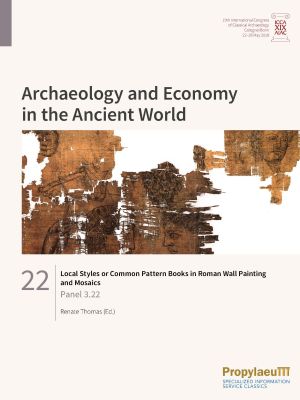Salvadori, Monica
Local Styles or Common Pattern Books in Roman Wall Painting and Mosaics: Panel 3.22
Das Thema des Panels „Lokalstile oder gemeinsame Musterbücher in der römischen Wandmalerei und bei Mosaiken“ hat zu unterschiedlichen Referaten angeregt, die verschiedene Aspekte der Arbeitsweise antiker Werkstätten und ihrer Produktion veranschaulicht haben. I. Bragantini hob am Beispiel der Malereien in Cartagena und Lyon hervor, dass dort ihrer Meinung nach italische Werkstätten tätig waren. Während sich St. Falzone, M. Marano und P. Tomassini den Merkmalen des Lokalstils in der Wandmalerei in Ostia widmeten, konzentrierte sich C. Sbrolli auf ikonographische Eigenheiten der ‚Werkstatt der Vettier‘ in Pompeji. E. Moormann und D. Esposito gingen der Frage nach, ob die Entwicklung der Wandmalerei in flavischer Zeit von Kontinuität oder einem neuen Impuls zeugt. C. Boschetti et alii stellten die Unterschiede in der Mosaikproduktion in Aquileia in augusteischer Zeit gegenüber der im 4. Jh. n. Chr. heraus. Während die ersten Werkstätten mit qualitätvollen Materialien aus Kampanien arbeiteten und vermutlich auch von dort kamen, verwendeten die späteren wahrscheinlich einheimischen Mosaizisten preiswertes lokal verfügbares Material. B. Tober zeigte auf, dass eine ‚internationale‘ Übereinkunft in der Ausstattungsform für bestimmte Raumfunktionen herrschte. E. Aydogdu und A. Kazim Öz gelang am Beispiel eines Mosaiks in Metropolis der verblüffende Nachweis, dass auch dreidimensionale vegetabile Blattmuster auf Vorlagen basieren, die auf geometrische Formeln zurückgehen.







